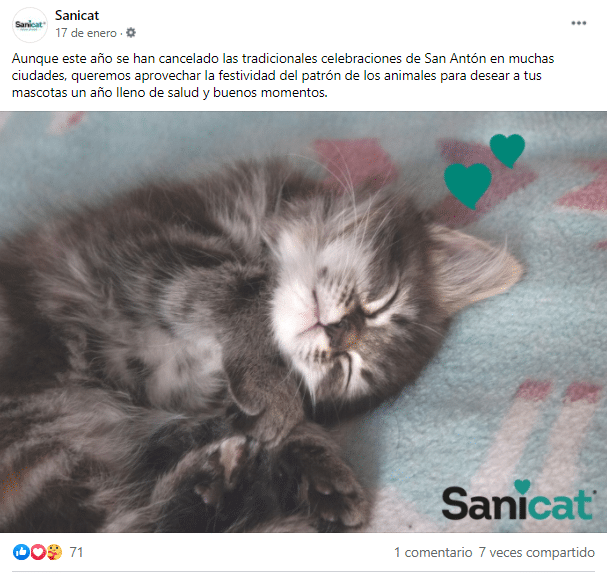Anyone who speaks both English and Spanish knows that there are vast differences between these two languages—but how do those differences affect content marketing in Spain vs. the US? And, if you’re not a native speaker, how do you do effective digital marketing in Spanish?
Localization for Spain and the US might seem as simple as translating your texts, but it’s far more complex than that. In order to effectively reach both audiences, you have to understand the linguistic and cultural intricacies that should inform your English and Spanish content marketing strategy.
At VeraContent, we offer content marketing localization for several markets, including Spain, where we’re based. We asked a few of our project managers and translators to tell us the most common differences they come across when running content campaigns between Spain and the US, with examples from our own work.
Here are nine distinctions that range from grammatical preferences and writing styles to cultural traits and holidays. By being aware of these fundamental differences, you’ll be better positioned to adapt your brand’s messages successfully for both marketing in Spanish and English.
See also: Multilingual content marketing: Your essential guide
Check out our free interactive worksheet to adapt your brand’s content strategy to local markets:

Content marketing in Spain vs. the US: Localization tips for marketers
There are several key differences when it comes to content marketing in Spain vs. the US. Here are the biggest areas to pay attention to when adapting your content to both audiences.
1. English is more concise than Spanish
This is the biggest difference, which is why it’s first on the list.
English tends to use shorter words, sentences and paragraphs than Spanish. This is especially apparent in social media copy and marketing content, which often has word limits for headlines and captions, as well as limited space for text on images.
“You have to let your client know that you need more space for Spanish copy, or make completely new images for each country.” – Jake Fagan, project manager at VeraContent
When doing content marketing in Spain, you’ll almost always need to find a way to cater to the additional length the Spanish translations require.
Check out the length of this description on Salesforce’s website in English and Spanish:


Anne-Sophie Delafosse, localization manager at Deliveroo, explains a similar situation. The Deliveroo app has a 16-character limit for filter titles such as “Grocery” or “Chinese food,” which can make adaptation to different languages challenging. Here’s how they handle word count restrictions:
“What we tend to do is ask the designers or the engineers: ‘What is it that you want to say?’ Not the actual transcript, but what is the core message? And we’ll find a completely different way of saying it that fits that character limit.” – Anne-Sophie Delafosse, localization manager at Deliveroo
Check out our full interview with Anne-Sophie Delafosse on The Content Mix podcast
Pro tip: For social media and marketing content in both Spanish and English, it’s best to keep your sentences as short as possible. Don’t be afraid to get creative and rewrite copy entirely if the result will be easier to read and more appealing to the target audience.
“The key is to leave a lot of space for the text and avoid cramming the design with a lot of elements.” – Esaú Gozalo, Digital Media Designer at VeraContent.
But why are Spanish sentences longer? Primarily because of grammatical differences, which brings me to my next point.
2. The syntax and morphology of each language are different
This is a complex point, but let’s stick to the basics. First of all, in English the adjective goes before the noun, and we also use compound adjectives that don’t exist in Spanish. For example:
- Best-selling author = autor con mayor éxito de ventas
- World-renowned leader = líder de renombre mundial
When it comes to comparatives and superlatives—which are commonly used in marketing content—in Spanish you almost always have to add extra words, such as más or menos (“more” or “less”).
In English, oftentimes all you need is a suffix like “-est” or “-er.” For example:
- The highest mountain = la montaña más alta
- A cheaper offer = una oferta más baja
As for the possessive, in English you can quickly join objects together with an apostrophe + s, whereas in Spanish you have to spell it all out. For example:
- Microsoft’s team = el equipo de Microsoft
- People’s emotions = las emociones de las personas
Here’s a recent example of the possessive used in a famous Spanish film. The original title is “El Laberinto del Fauno” whereas in English it’s “Pan’s Labyrinth.”


All of these grammatical differences tend to make Spanish marketing copy longer than English.
Check out our Sony Music Spain client story for all the details on how we to managed to successfully translate a Spanish song—with all its nuances—into English.
3. English has a wider vocabulary than Spanish, with more expressions and colloquialisms
While this may sound like a generalization, here’s some evidence:
According to the most official Spanish dictionary—Diccionario de la Real Academia Española (RAE)—the Spanish language has around 88,000 words, excluding Americanismos. According to the Oxford English Dictionary (OED), the English language has about 250,000 distinct words, excluding inflections and regional vocabulary. (Source)
English has such a wide vocabulary because of its roots. Although it’s a Germanic language, it’s been greatly influenced by Latin and many other modern languages, including French and Dutch.
See also: US vs. German marketing content: Why localization is key
The English language has tons of synonyms and phrasal verbs to choose from. Just think of all the ways you could say “to invent”: to make up, come up with, think up, create, develop, devise, conceive of… and the list goes on.
When it comes to content marketing in Spain, sometimes there simply isn’t an exact equivalent.
For example, here’s a social media image that we adapted for a US client’s Spanish audience. Notice the play on words with “everyone’s cup of tea” that can’t be directly translated. Our solution? Rewrite it!
*The Spanish text reads: “I’m like Bourbon whiskey: intense and not suitable for everyone.”


As you can see, both English and Spanish marketing can be playful and clever, but sometimes they require a different approach to wordplay.
According to one of our project managers at VeraContent from Spain, María Rodríguez:
“English is a more flexible language when it comes to creating new words. In Spanish, this can look a bit forced. Sometimes it’s best to come up with a pun or a funny rhyme instead.”
See also: 5 ways to ensure a quality localization – even if you don’t speak the language
4. Dashes aren’t as frequent in Spanish
In English we use en and em dashes frequently, including in titles. Although they do exist in Spanish, they’re not used nearly as often.
One of our translators from Spain, Andrea de la Cruz, suggests a few ways to adapt the dash in a Spanish sentence. You can use parentheses, a colon or a preposition, start a new sentence instead or simply omit it if possible.
Here are some examples from Andrea’s own work at VeraContent:
Omitting the dash in an article headline:
- English: Blazing her own trail—and helping those in her wake
- Spanish: Cómo abrirse camino y ayudar a quien quiera seguir nuestros pasos
Starting a new sentence instead of using a dash:
- English: The place I call home is warm and full of life, yet politically unstable and disorganized—a colorful mess that shaped me into who I am today.
- Spanish: Mi hogar es un lugar cálido y lleno de vida, pero también está marcado por la inestabilidad y los desórdenes políticos. Ese caos pintoresco es lo que me ha llevado a ser quien soy.
See also: Top 7 localization tools to optimize all your digital content
5. Spanish is a gendered language, whereas English isn’t
Almost all Spanish adjectives and nouns are either masculine or feminine, which is something you need to pay attention to when localizing messages for Spanish content marketing. Sometimes you’ll need to find alternatives—whether you’re focused on inclusivity or accuracy (or, ideally, both).
Here are a few examples:
Example 1:
- English: Are you ready?
- Spanish direct translation: ¿Estás preparado? (masculine) or ¿Estás preparada? (feminine)
- Possible solution: Write it in the imperative, ¡Prepárate! (which means “Get ready!”)
Example 2:
- English: Hi all
- Spanish direct translation: Hola a todos. Even if you’re addressing a crowd of 99 women and one man, you should technically use the masculine form. The feminine would be: Hola a todas.
- Solution: If you want to avoid excluding anyone or you’re just not sure who the audience is, you can opt for a gender-neutral expression like ¡Hola a todo el mundo! (“Hi everyone!”).
Note: It’s not always this simple to find an alternative. This is one reason why you might consider hiring a marketing translator, who will be able to find the appropriate gendered term or an alternative way of expressing the message in an inclusive way.
See also: What is inclusive language? Key examples from VeraContent’s tone & style guide
6. In English you always need a subject, whereas in Spanish you don’t
Anyone who’s learned Spanish as a second language has likely come across enormous paragraphs of Spanish text with super long sentences, and quickly gotten confused. Part of the reason is that Spanish doesn’t require using subjects before verbs. This can make it extremely difficult to know who or what each sentence refers to—especially out of context.
Example:
- English: The restaurant has it all!
- Spanish: ¡Lo tiene todo! (Notice that there’s no subject specified here, but it’s still correct.)
For English speakers this can be utterly confusing. Oftentimes you’ll need to reread a Spanish text a few times to figure out what the subject is. If you’re not sure, ask the client or writer.
Pro tip: When you’re localizing a text from Spanish into English, one of the best ways to make sure it sounds natural is to add the subject back in several times for clarity, even if it wasn’t included in the original Spanish version.
7. In English there’s only one way to address the audience: “you”—whereas in Spanish there are several
The most important word in content marketing is “you.” But what’s the right way to say it?
In English the answer is simple; there’s only one commonly accepted form of the second person pronoun. But in Spanish there are several.
In the singular, you can use the informal tú or the formal usted. As for the plural, Latin American Spanish speakers use ustedes, while speakers in Spain use vosotros. And to complicate things even further, in certain parts of Central and South America, the second person singular pronoun is vos.
Not only are the pronouns different; they also affect how the verbs that follow them are conjugated. In other words, tú, usted and vos all require different verb endings.
Whether you’re localizing to or from Spanish, you need to be very careful to correctly adapt the text depending on who you’re addressing.
In English:
- Don’t miss it! (A common English expression, which can be said to an individual person or to a whole group of people)
In Spanish (Spain):
- “No te lo pierdas” (using the singular tú)
- “No os lo perdáis” (using the plural vosotros)
- “No se lo pierdan” (using the plural ustedes)
Pro tip: When adapting English marketing copy into Spanish, make sure you talk to your client to fully understand who their audience is and the best way to address them.
See also: Knowing your audience is the key to great marketing: 20 quotes from industry experts
8. Social media marketing in Spanish and English require different hashtags and emojis
It’s no secret that brands have to use hashtags strategically, and sometimes there are also country-specific hashtags you need to be aware of.
For example, when the pandemic hit, the English hashtags #stayhome and #stayathome took social media by storm. In Spain, the equivalents were #quedateencasa and #yomequedoencasa.
Other times, it’s a good idea to keep global hashtags in English, such as #tbt (throwback Thursday) or #ootd (outfit of the day).
Pro tip: Your localization team should know what the most popular and appropriate hashtag is for each campaign, and constantly be on the lookout for new ones. And if your company has a custom hashtag, make sure to decide if you want to localize it as well, or keep it the same across all your global channels.
See also: 12 multilingual social media tips that really work
9. Cultural traditions and holidays vary between the US and Spain
Every country in the world has its own unique holidays and traditions, including Spain and the US. If you’re adapting a marketing campaign that has to do with a holiday, make sure it’s celebrated in your target market. Sometimes you’ll need to totally rework an image or caption to make it relevant—or not post it at all.
Example #1: We made a special Labor Day post for this client’s US audience, but posted something completely different for Spain (since this holiday is celebrated on a different day there).

Likewise, we created a custom post for the Spanish holiday of San Antón, which celebrates a love for animals.

Example #2: In the images below, you can see how we used the same photo for the US and Spain, although we redid the captions for each and published them two days apart for two different holidays.


The Spanish caption reads, “I heard there was a cookie here! Happy día de los inocentes!” (This is a holiday similar to April Fool’s Day, which is celebrated on December 28.)
We published the same photo for the US audience on December 26th, and referenced overeating during the Christmas season instead.
Pro tip: The most effective way to account for local holidays is to create a social media or editorial calendar for each market. This will allow your community marketing managers to suggest creative pieces for special dates well in advance, so that your design team can prepare them accordingly.
See also: How to set up a design workflow for global social media accounts
Content marketing in Spanish and US English: It all comes down to localization
Ultimately, the key to localizing any content is knowing exactly who your target audience is and how to make your message resonate with them.
The nine differences described above are a good starting point to adapt your messages for Spanish and American audiences. However, keep in mind that every single message, brand campaign and audience is unique. And the best English to Spanish content marketing strategy—and vice versa—involves a clear understanding of the biggest differences between the two languages and cultures.
So what’s the solution? Work with local community managers, localization experts and translation professionals who have a true understanding of each language. They’ll take the time to gain a real understanding of your message and figure out how to convey it to your target audience—without anything getting lost in translation.
As a multilingual content agency, VeraContent specializes in this kind of work. We’re based in Madrid, Spain, and we’ve built an international team of trusted translators, writers and marketing experts to help your brand succeed across the globe. If you’re looking for English and Spanish localization experts, we can help.
Find out more about what we do and get a custom quote.
See also: Choosing the right transcreation agency for your business
Want to learn more about content marketing localization? Check out these articles:
- Marketing translation: Engaging audiences in their own language
- How to choose the right multilingual SEO agency
- How to make a blog editorial calendar in multiple languages
- 8 best tools for running an effective multilingual blog
- 10 reasons to run social media in different languages
- US vs. German marketing content: Why localization is key
- Top 7 localization tools to optimize all your digital content

